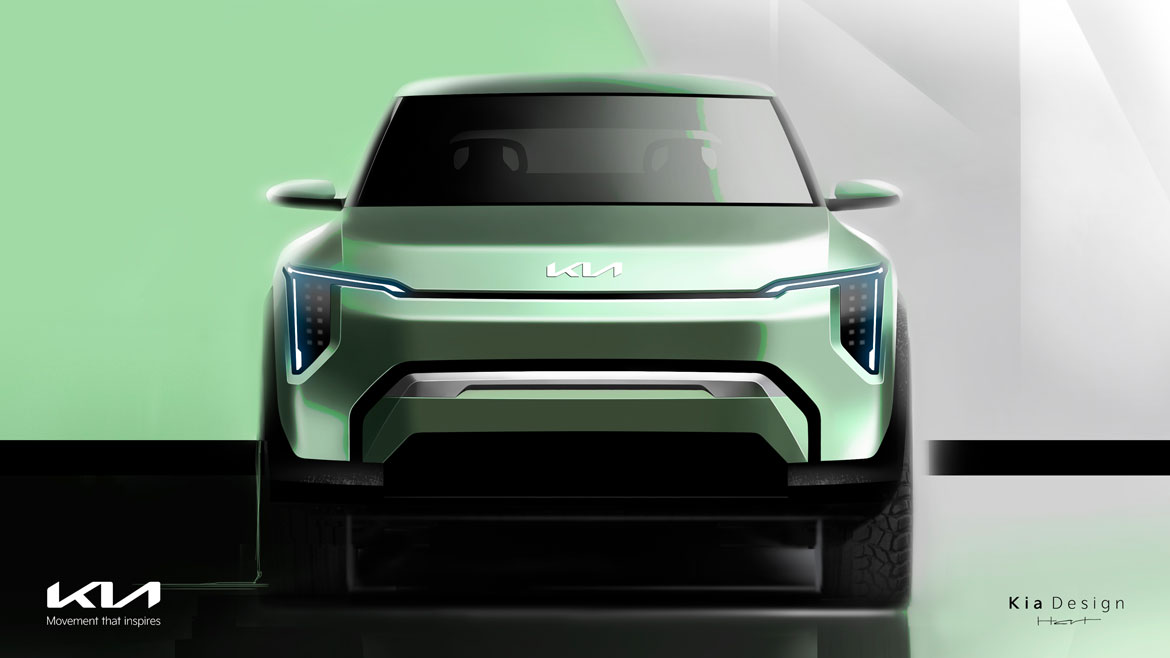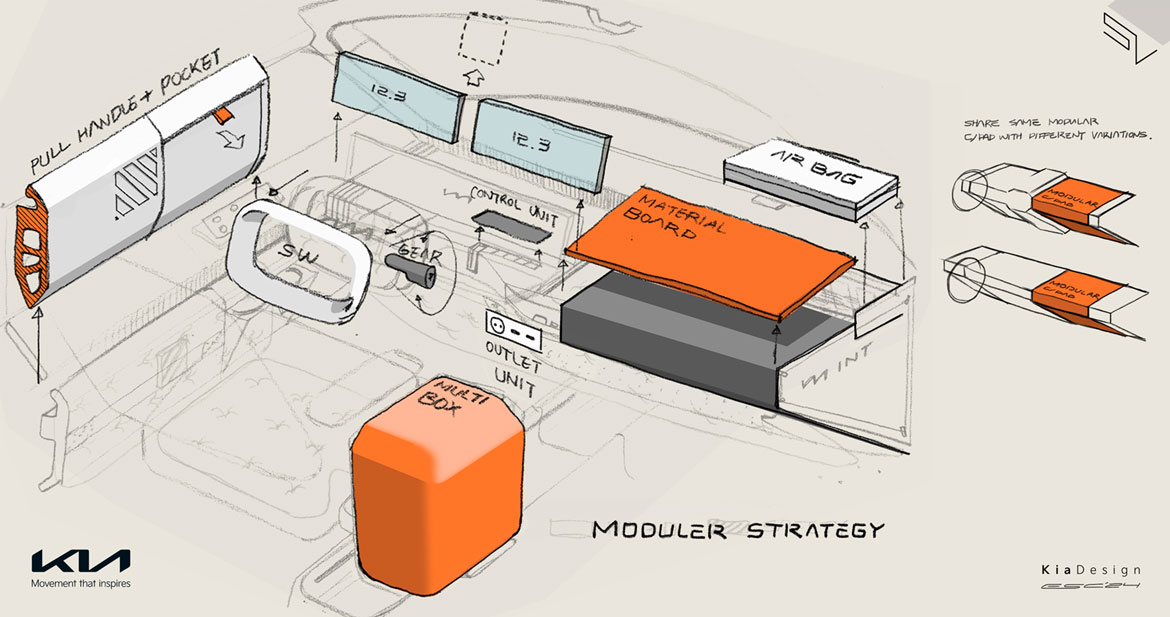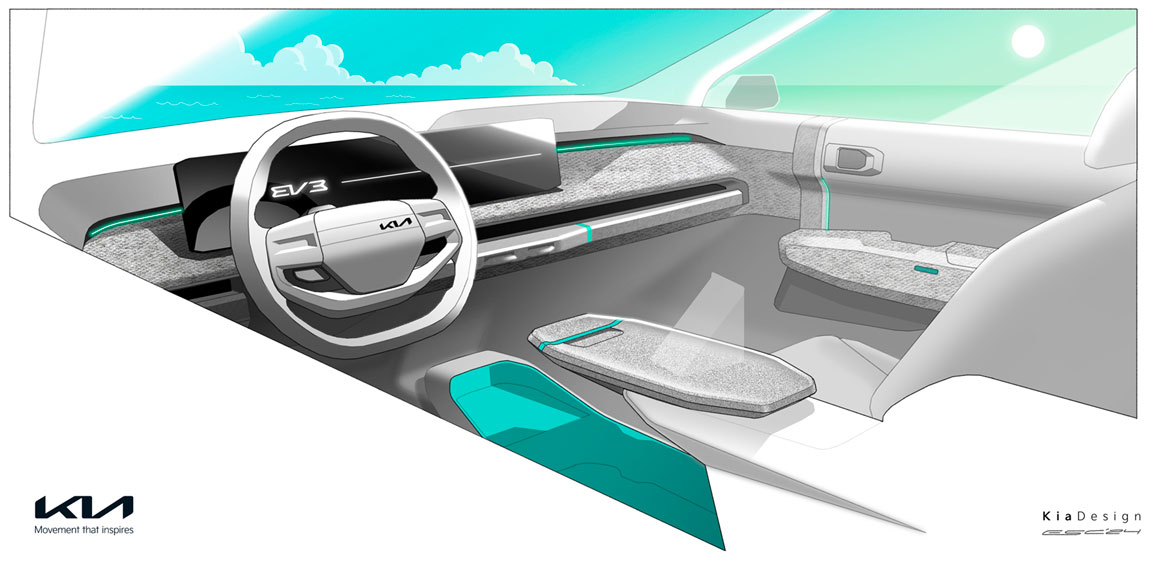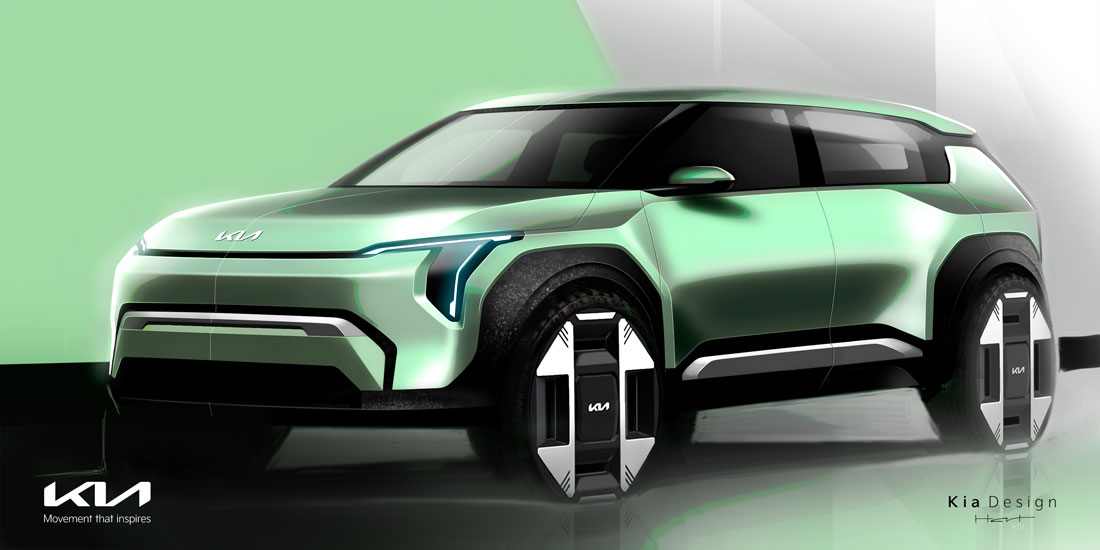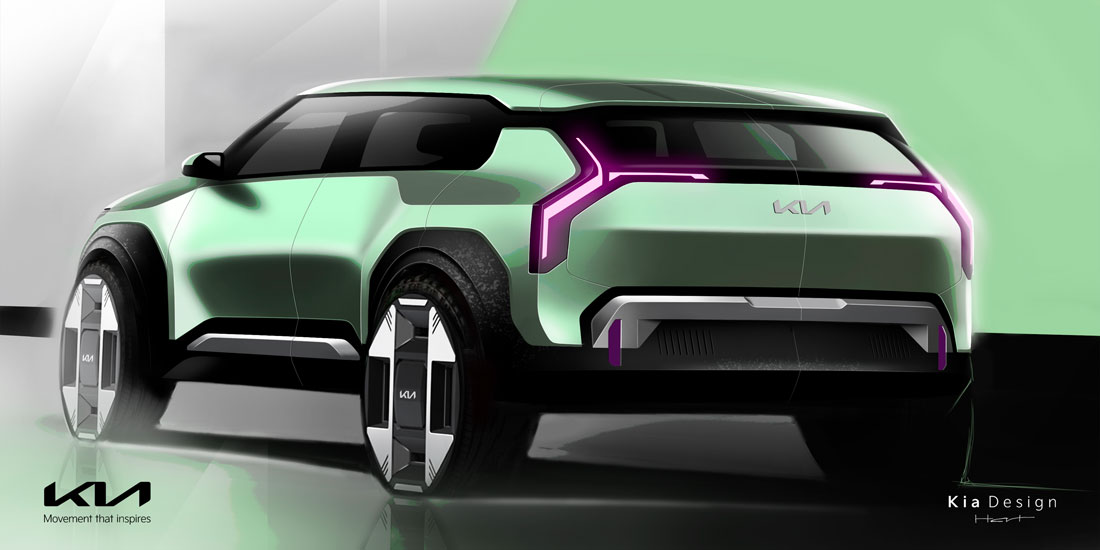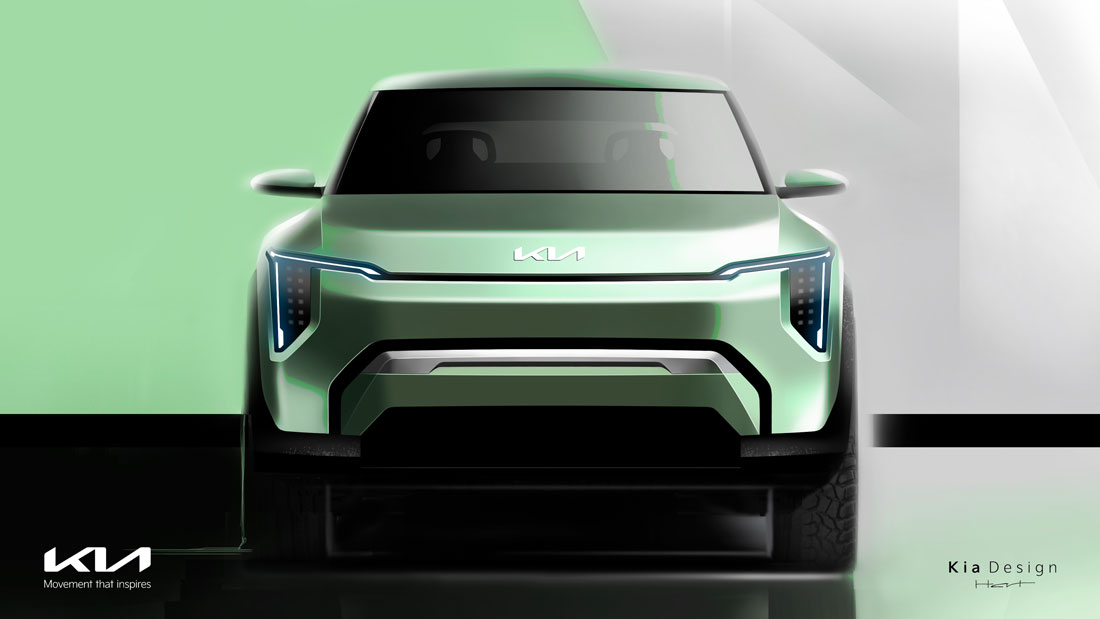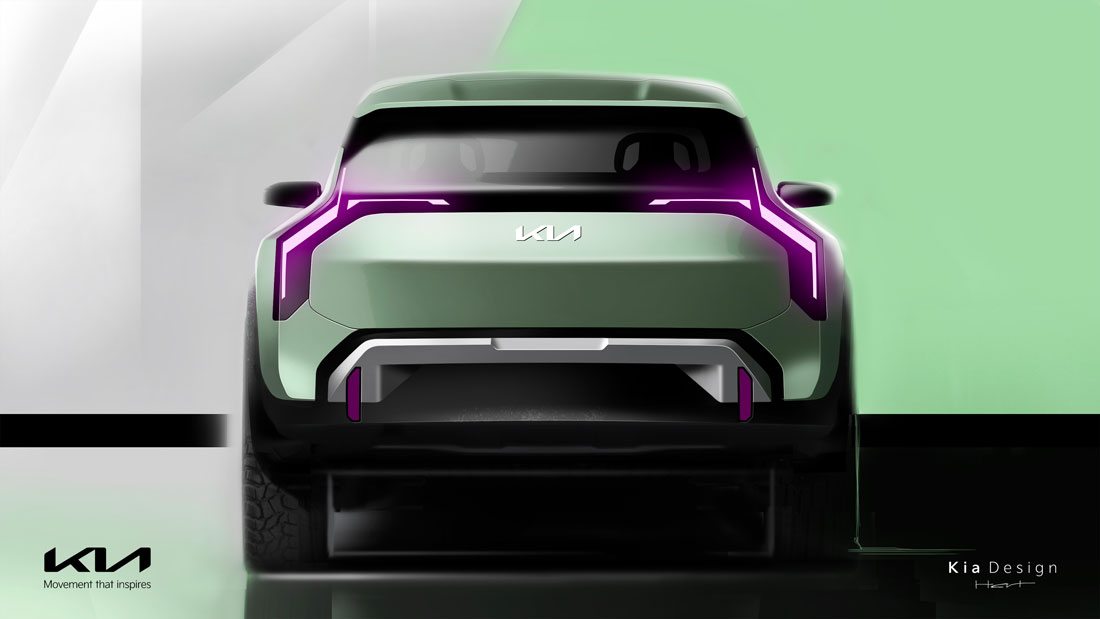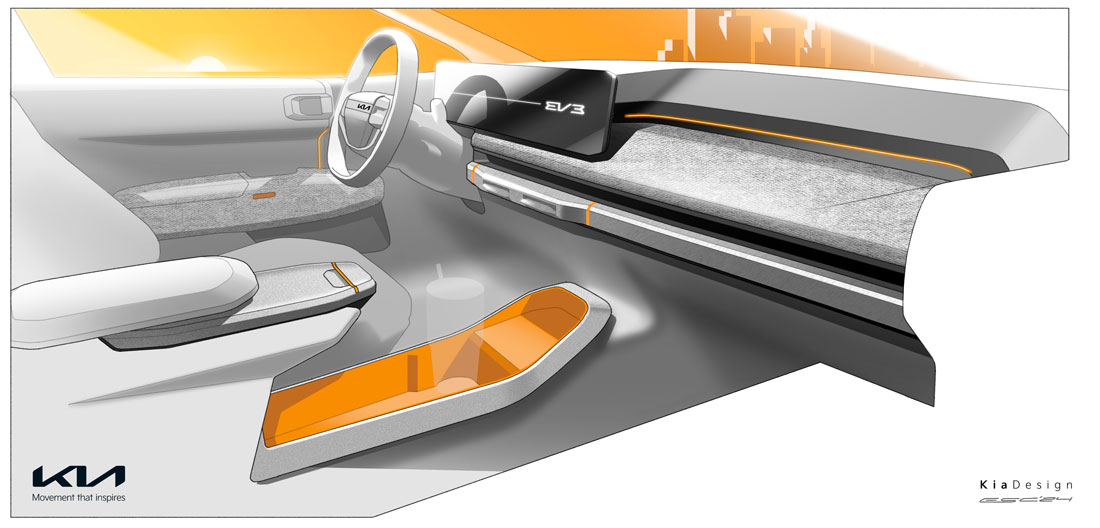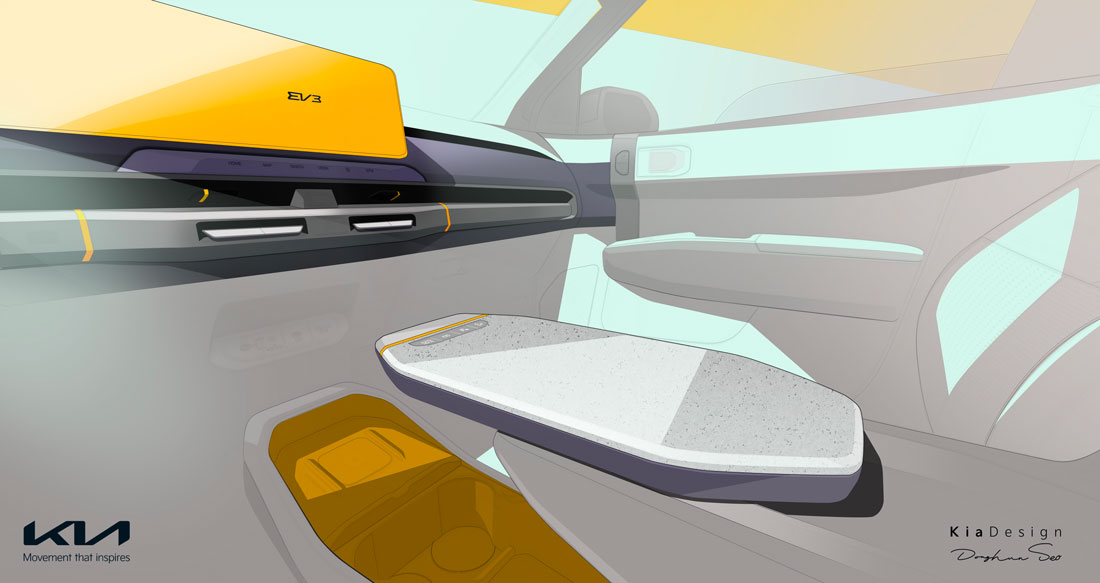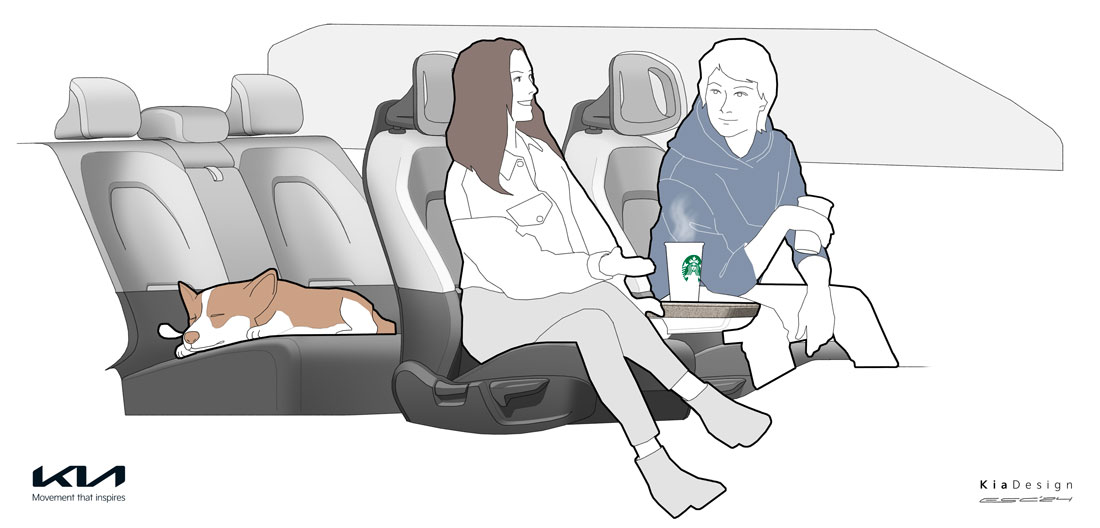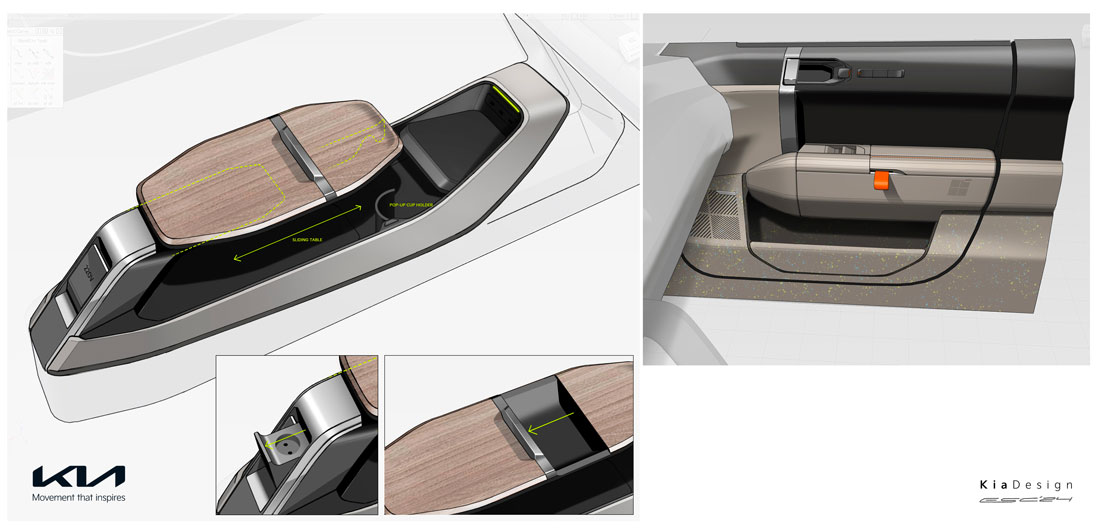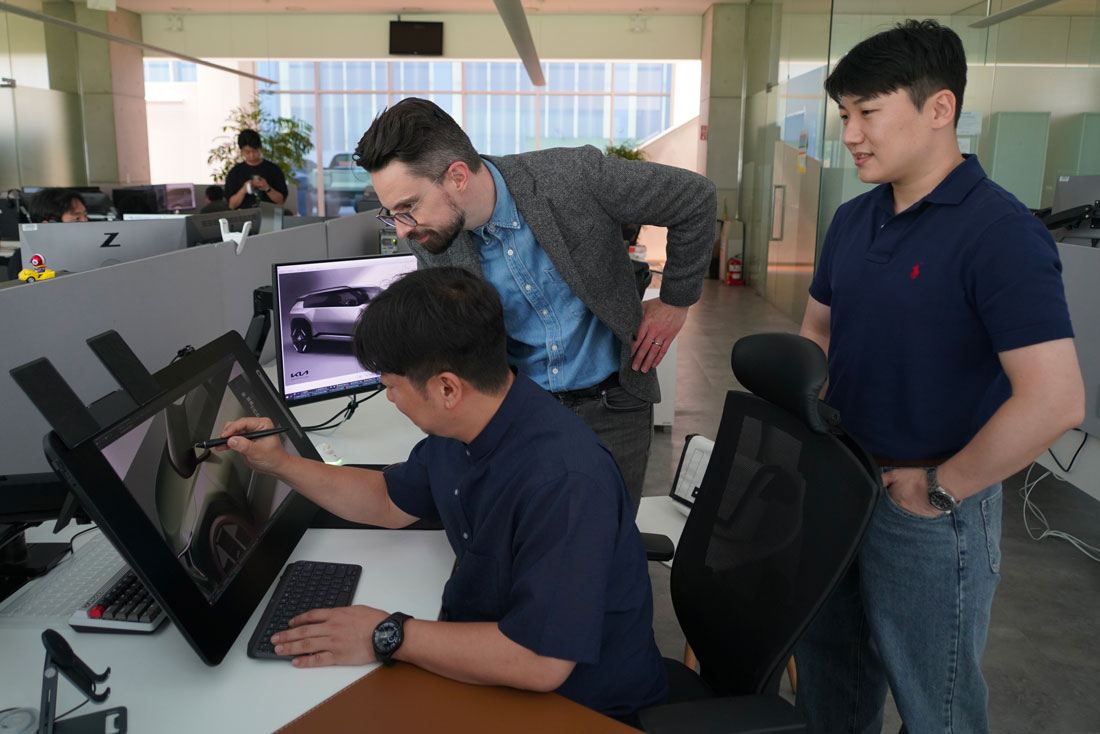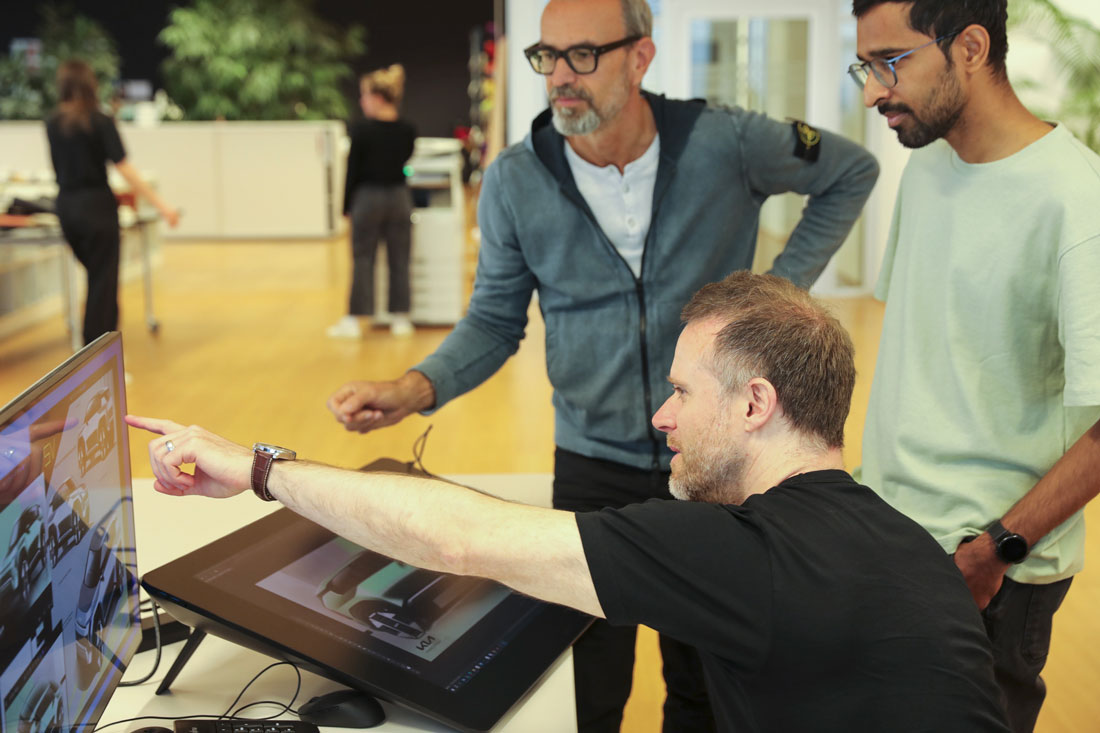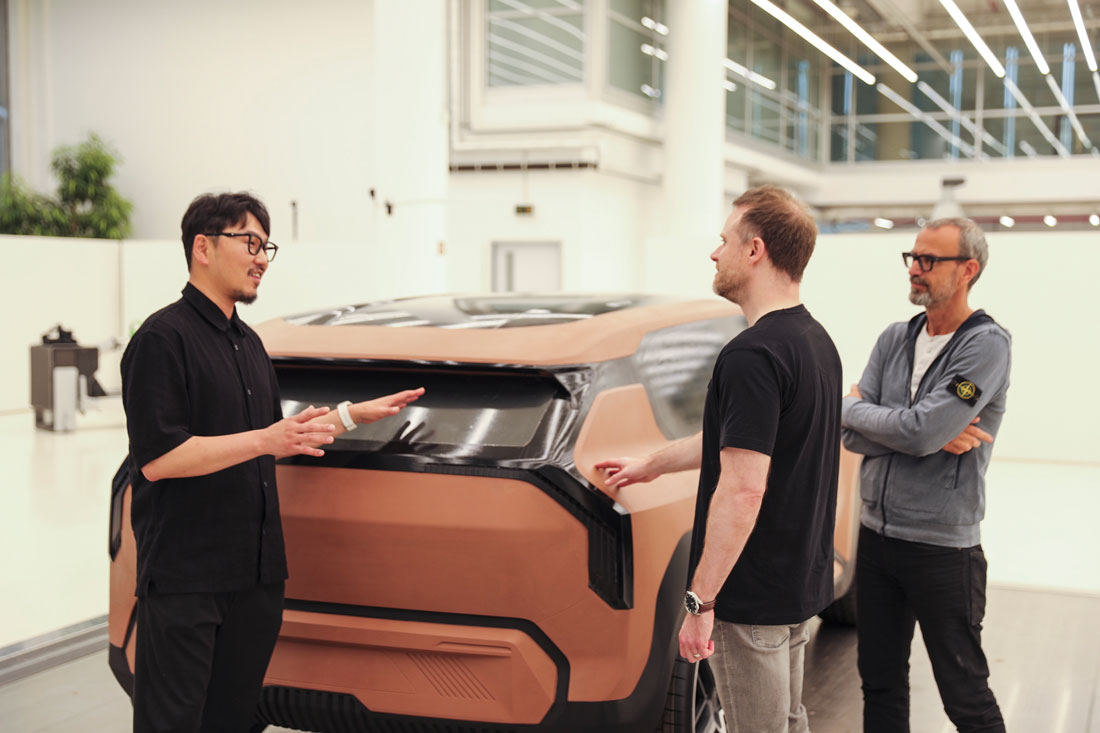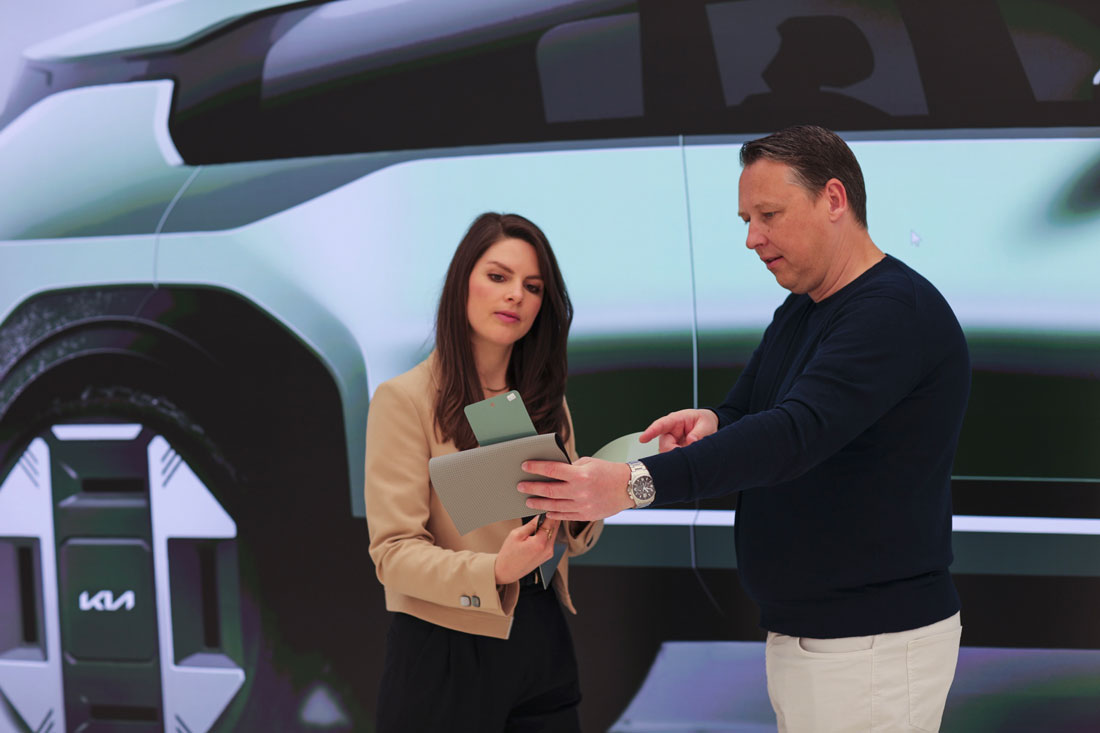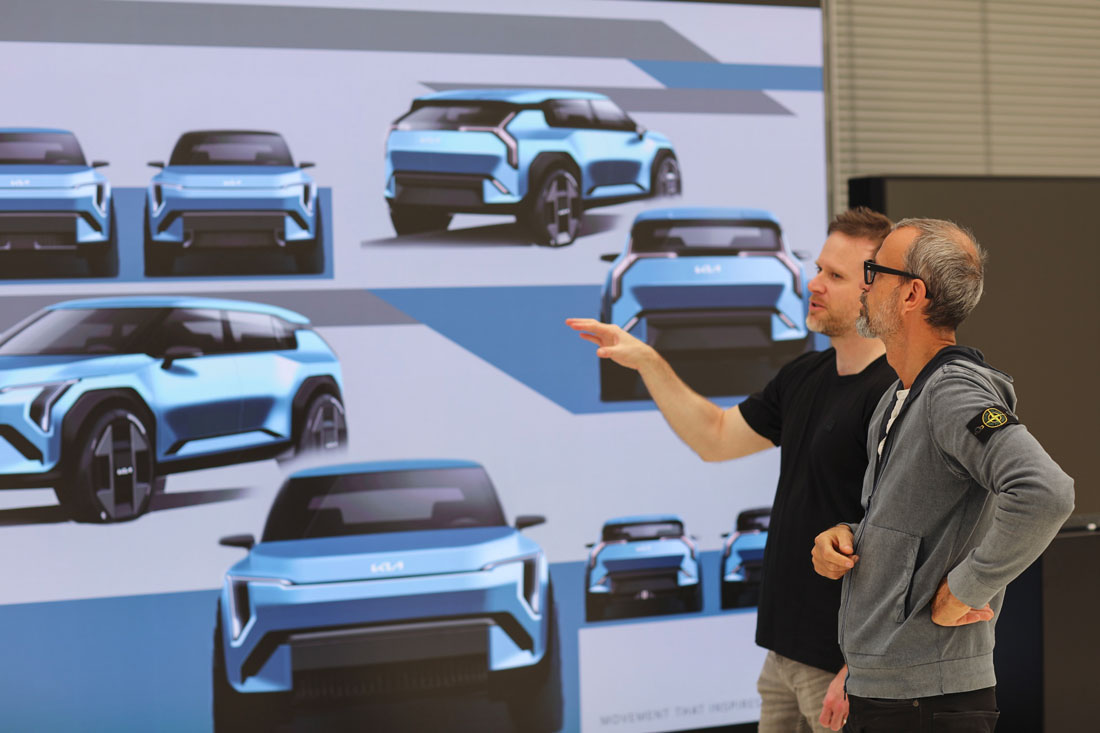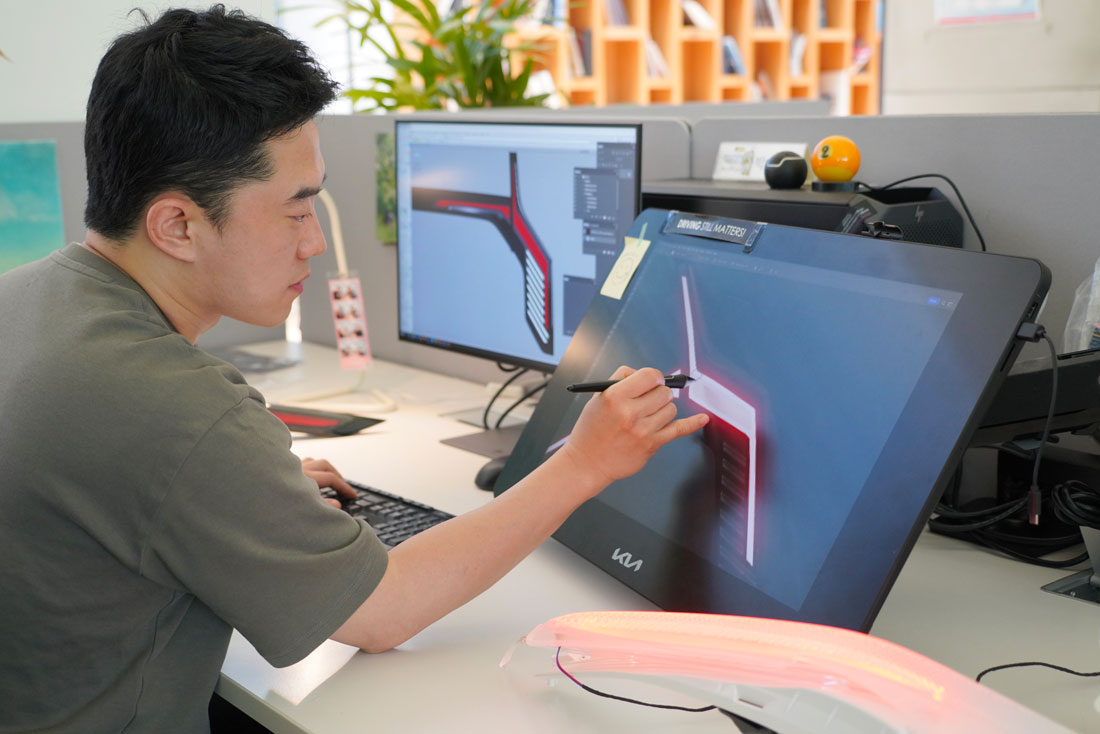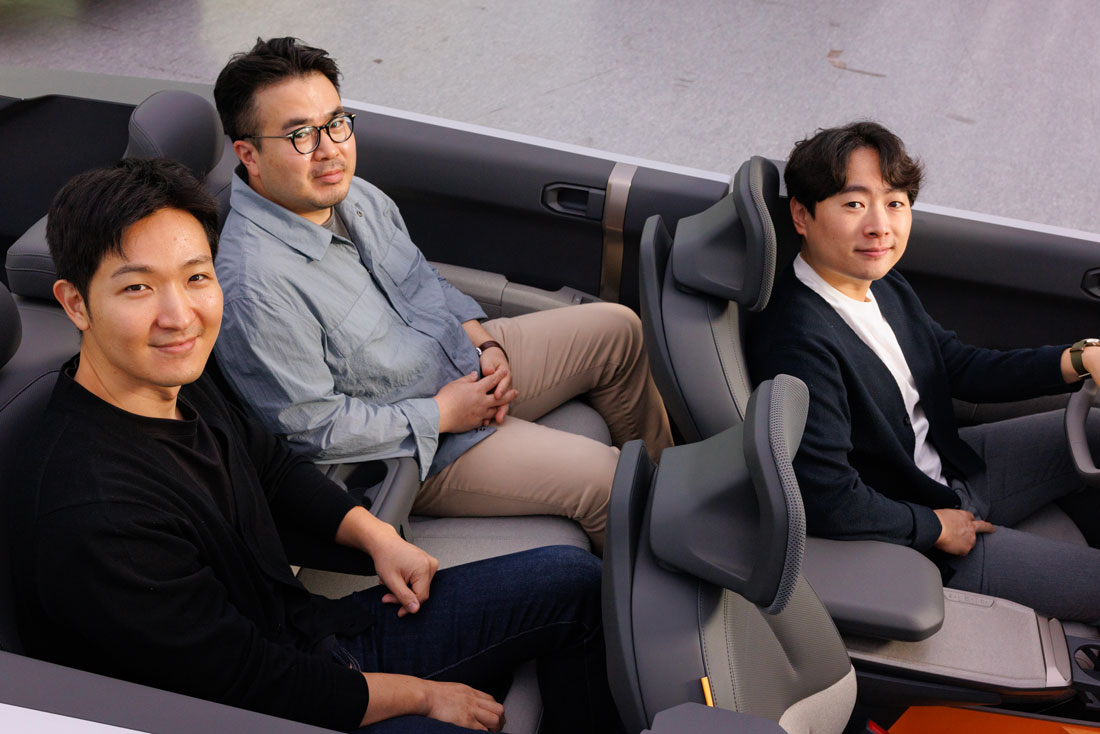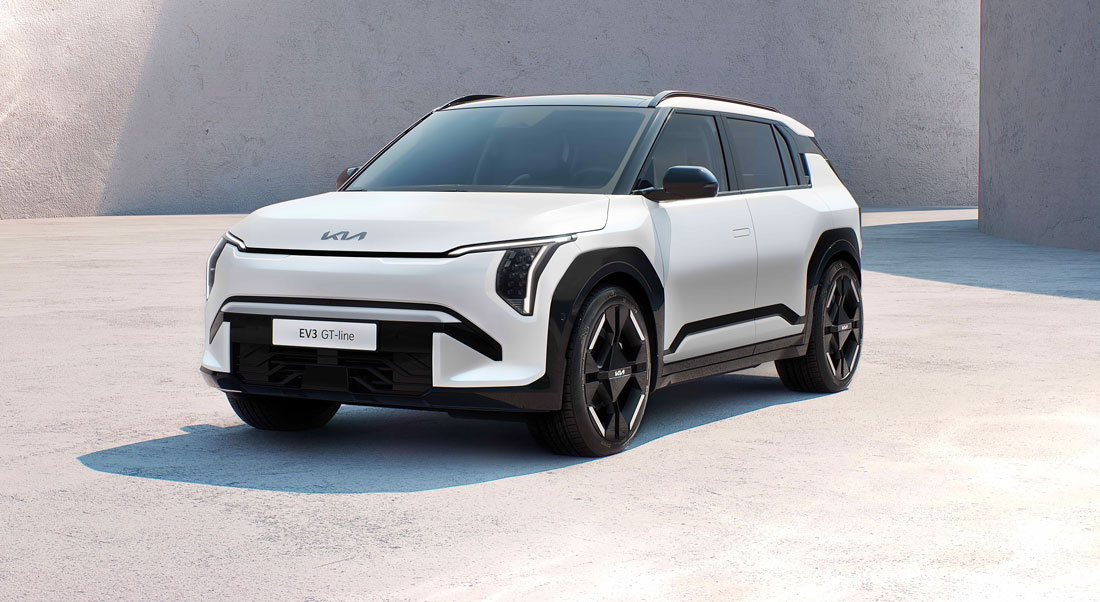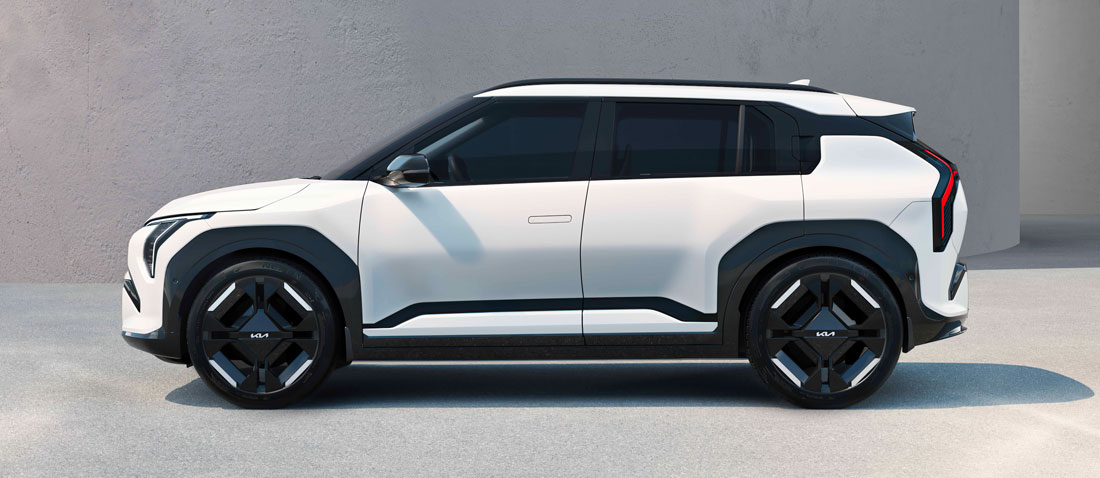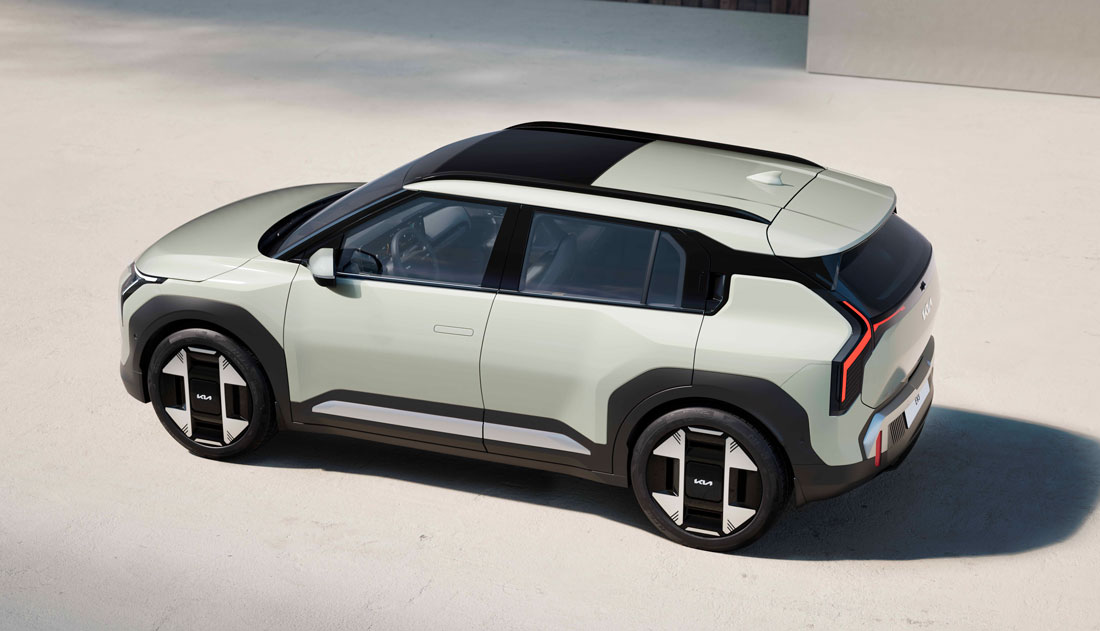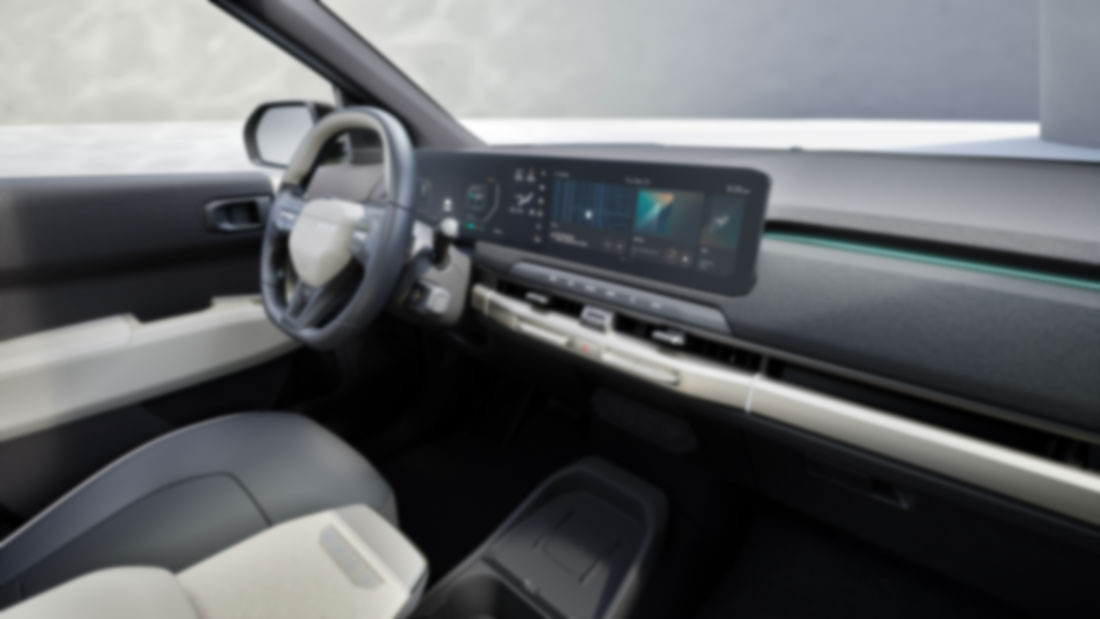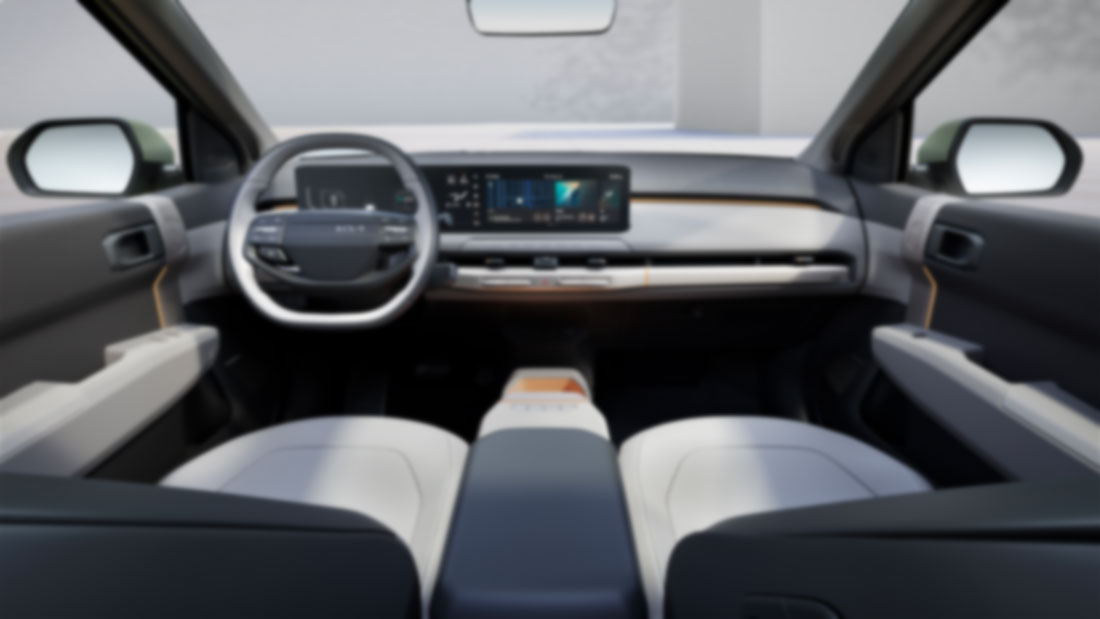With its latest lineup, including EVs, Kia has made significant progress in its quest to attain premium segment status. Renewal has mainly involved the top end of the range, with the launch of the EV9 that also inspired the recent update of the Sorento based on the “Opposites United” philosophy. In this vision, seemingly contrasting goals such as the pursuit of quality and sustainability, elegance and practicality blend with Kia’s efforts to create a truly universal design language that cuts across markets, tastes and segments.
Designing a car for all markets
A language that the new EV3 now aims to apply, along with the brand’s ambitions, to the key compact SUV segment. Karim Habib, Executive Vice President and Head of Global Design at Kia since 2019 after filling top jobs at BMW, Mercedes-Benz and Infiniti, explained to us what it means to design such a car for all markets at the EV3 preview in Milan.
The brand growth
“As of now our attention is trained mainly on two objectives: the first is usability or practicality, the second is expressing the value we are trying to apply to the brand in this growth phase in a way that resonates consistently across different markets. It doesn’t mean making cars that everyone likes; that would be to go in the wrong direction”.
So are tastes still so different from one market to another?
No, there are points in common between certain types of clientele regardless of where they are located. As a designer, I tend to believe that the quality of design today is very high globally and it is becoming more and more unusual to see cars that are not well made.
So, what premises are the EV3 based on?
A good design for us starts with a long wheelbase, short overhangs and big wheels, all features favoured by the new electric platforms. But it is also important for new cars to have a character of their own and be efficiently aerodynamic. That has led us to play with very straight lines like the long, low roofline. We wanted to define the interior of the car as a space for living in and not just for driving, so in the same way for the exterior we were inspired by ideas that are not typically automotive, but take their inspiration from disciplines like architecture.
So it was the interior space that influenced the form and not the other way around?
With the EV9 we started with the idea of going for boxy shapes like the classic Land Rover, Toyota and Jeep off-roaders, but interpreting them more dynamically. The lines are horizontal to accentuate length, width and road presence. Inside, the horizontal dashboard is fundamental to conveying the idea of space. It is separate from the central tunnel, eliminating the traditional console that used to connect driver and passenger sides and repositioning components such as the climate controls.
(Full article in A&D no. 268)

